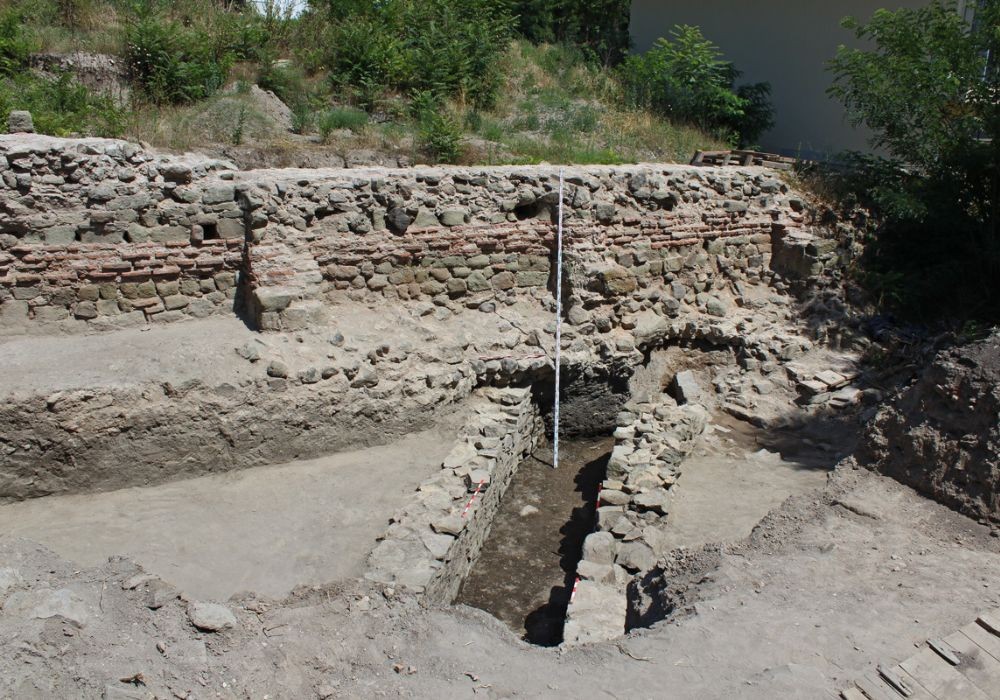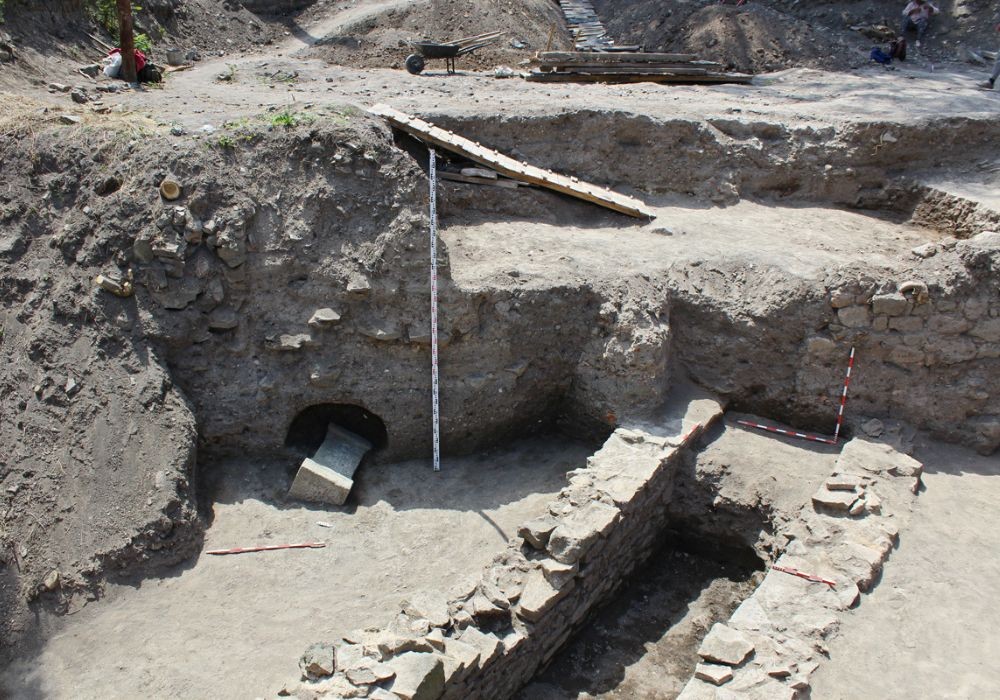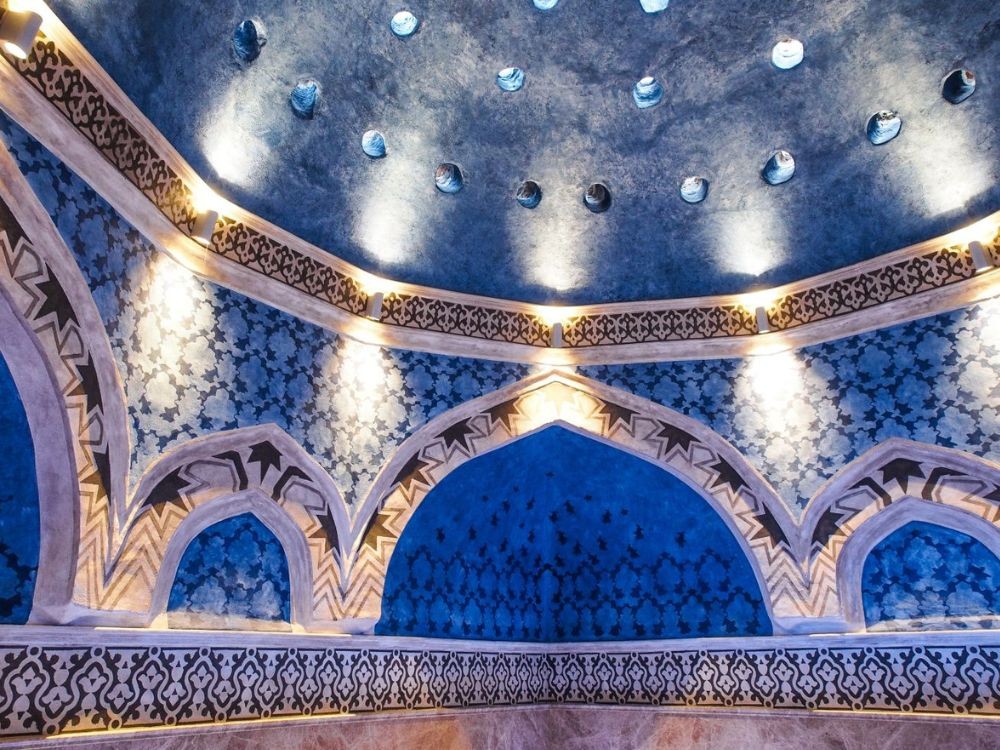Part of an ancient 1st century Roman canal was unearthed during excavations of a Roman bath on the territory of an ancient settlement called Aquae Calidae this archaeological season. Structures from medieval rooms, built using mortar and mud as binding material were also unearthed, as well as part of a Medieval wall, the Regional Museum of History in Burgas has announced.

The digs near Burgas also unearthed old coins, mostly from the 4th century, 11th century Medieval seals, as well as large amounts of 12th – 13th century earthenware. A few days ago archaeologists made a unique find – an altar, found intact, with an intriguing inscription in Latin dating to the 2nd century AD. This inscription tells us that it was made as a token of gratitude to the nymphs (protectresses of the springs and givers of health), with a dedication by a Roman officer from Parma in Italy sent to serve in the Balkans.

The warm spring at what are now the Burgas mineral baths has been known for centuries. People from near and far would flock here to pray for health and to seek a cure for their ailments. According to historical records, Aquae Calidae came into being, as far back as the first millennium BC, around the mineral springs near what is today the city of Burgas. That was when the Thracians built a beautiful sanctuary – the sanctuary of the three nymphs – close to the hot spring. The thermae complex covered an area of over half a hectare. And because there was a constant stream of people coming here for the medicinal waters, a whole town sprang up around the baths. The Romans called it Aquae Calidae – hot waters - and in 61 AD Emperor Nero built magnificent baths, later fortress walls were erected. During the Middle Ages Aquae Calidae came to be known as Therma or Thermopolis (from Greek – warm city). In the 14th century, Sultan Suleiman the Magnificent also appreciated the curative properties of the water and built a modern, for its time, Turkish bath.
In our day tourists can see the fully restored marble-clad bath belonging to Suleiman the Magnificent, with its ceramics, typical of the Orient.

Compiled by Veneta Nikolova
Photos: aquae-calidae.com, burgas.bgIt is 131 years since the birth of Tsar Boris III, dubbed unifier. Boris Saxe-Coburg-Gotha found himself at the head of Bulgaria after the abdication of Tsar Ferdinand after the defeat of the country in World War I. The young monarch was crowned..
The ancient city Heraclea Sintica is among Bulgaria's most attractive tourist sites presented at international tourist exhibitions in Vienna and Stuttgart , Katya Stoyanova, head of the project "Restoration, conservation and socialization of Heraclea..
Archaeological excavations in the Kaleto district of the Bulgarian town of Lom situated on the Danube River have revealed remains of Roman defensive facilities dating back to the 1st century AD . Archaeologists prove that Lower Danube region..

+359 2 9336 661
